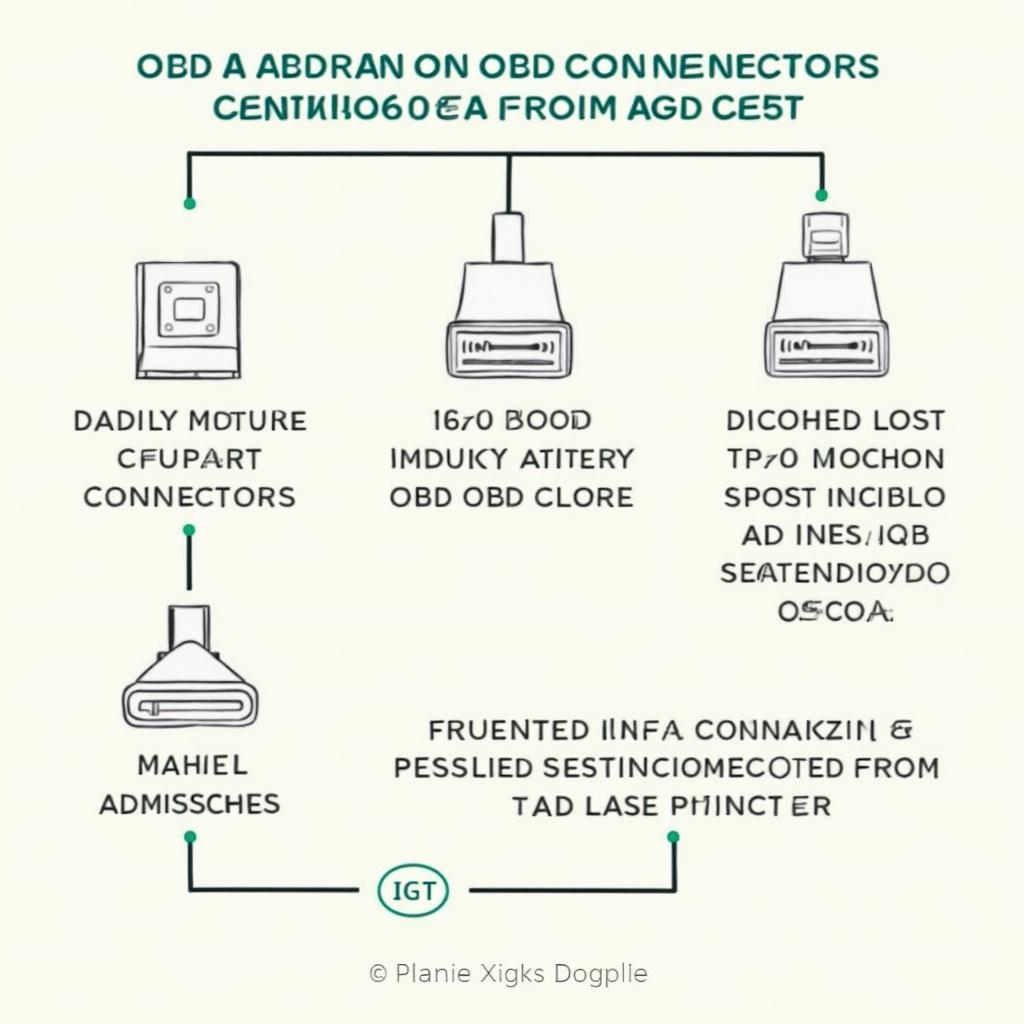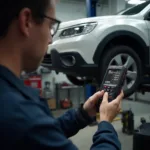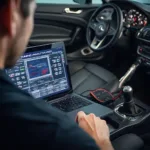OBD2, or On-Board Diagnostics, generation two, has become an essential tool for car owners and mechanics alike. It allows you to tap into your car’s computer system and diagnose issues, sometimes even before they become major problems. But you might be wondering – what year cars can you actually use an OBD2 scanner on?
This comprehensive guide will delve into everything you need to know about OBD2 compatibility, common myths, and how to determine if your vehicle is OBD2 compliant.
Understanding OBD2 and its Evolution
Before we jump into the specifics of year compatibility, let’s briefly clarify what OBD2 is and how it came to be. OBD systems were first introduced in the 1980s as a way to monitor emissions-related components. However, it was not until 1996 that OBD2 became mandatory for all vehicles sold in the United States. This standardization revolutionized car diagnostics by:
- Implementing a universal connector and communication protocol.
- Providing access to a broader range of engine and emissions data.
- Enabling car owners to diagnose and sometimes even fix minor issues themselves.
 OBD2 Connector Evolution
OBD2 Connector Evolution
OBD2 Compatibility by Year: What You Need to Know
The most common question we encounter is: “Can I use an OBD2 scanner on my car?” The answer, unfortunately, isn’t a simple yes or no. Here’s a general guideline for OBD2 compatibility based on the vehicle’s year of manufacture:
- 1996 and Later (US, Canada): All gasoline-powered vehicles manufactured in 1996 or later in the United States and Canada are OBD2 compliant.
- 2001 and Later (EU): In the European Union, OBD2 compliance became mandatory for gasoline vehicles starting in 2001.
- 2004 and Later (Diesel Vehicles): Both the US and EU mandated OBD2 compliance for diesel vehicles starting in model year 2004.
- Pre-1996 Vehicles: While some pre-1996 cars might have a form of OBD, it’s highly unlikely to be OBD2 compliant. These systems often used manufacturer-specific connectors and protocols.
Important Note: These are general guidelines. There can be exceptions. For instance, some early OBD2 systems, especially between 1994 and 1996, might have variations in protocols or require specific adapters.
How to Check if Your Car is OBD2 Compliant
Not sure if your car is OBD2 compliant? Here are three easy ways to find out:
-
Check the Owner’s Manual: Your vehicle’s owner’s manual is the best place to start. It usually has a section dedicated to emissions control or diagnostics, mentioning OBD2 compliance.
-
Inspect the Under-Dash Area: Physically look for the OBD2 port. It’s typically located beneath the driver’s side dashboard, near the steering column. The port is a 16-pin trapezoidal connector.
-
Use an Online OBD2 Compatibility Checker: Several websites and mobile apps can help you determine if your car is OBD2 compliant. Just enter your car’s make, model, and year.
Dispelling Common OBD2 Myths
Let’s bust some common myths surrounding OBD2:
-
Myth: All OBD2 scanners are the same. Fact: OBD2 scanners vary significantly in features, capabilities, and price. Some offer basic code reading, while others provide advanced diagnostics and live data streaming.
-
Myth: OBD2 scanners can fix car problems. Fact: OBD2 scanners diagnose problems; they don’t fix them. They help you pinpoint issues, but you’ll need mechanical expertise or a professional mechanic for repairs.
Choosing the Right OBD2 Scanner for Your Needs
With countless OBD2 scanners available, choosing the right one can feel overwhelming. Consider these factors:
- Your Budget: Basic code readers can cost as low as $20, while professional-grade scanners can go upwards of $1000.
- Features You Need: Do you need basic code reading, live data, or advanced functions like ABS or airbag diagnostics?
- Connectivity: OBD2 scanners offer various connectivity options, including Bluetooth, USB, and Wi-Fi. Choose what suits your needs and device compatibility.
wifi obd2 scanners offer several advantages for users who value convenience and versatility in their diagnostic tools.
elm327 usb vehicle obd2 scanner tool is a popular choice for those looking for a reliable and affordable OBD2 solution.
Conclusion
Understanding OBD2 compatibility is crucial for any car owner. While the technology became mandatory in the mid-90s for US vehicles, there are variations and factors to consider based on geography, fuel type, and the specific make and model of your car.
By following the guidelines in this article and utilizing the resources available, you can determine your car’s compatibility and unlock the power of OBD2 diagnostics. Remember, knowledge is power when it comes to your vehicle’s health.

